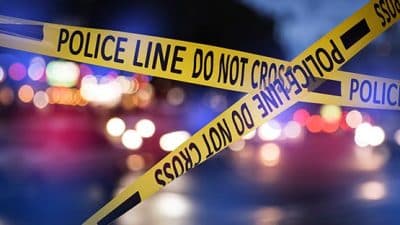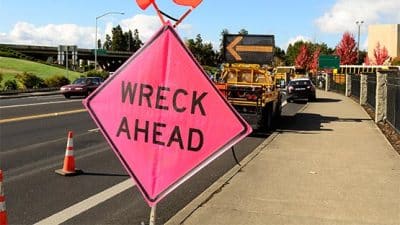
The United States has seen more than 500 mass shootings so far in 2022.
And the COVID-19 pandemic continues to linger.
WalletHub released its report 2022’s Safest Cities in America to determine where Americans feel most protected against life’s hazards, including nonphysical dangers.
More than 180 American cities were compared across 42 key metrics to produce report results. Data includes percentage of residents who are fully vaccinated, assaults per capita, the unemployment rate and road quality.
WalletHub’s report determined the safest city in America is Columbia, Md., followed by Nashua, N.D., Laredo, Texas, Portland, Maine and Warwick, Rhode Island. Yonkers, N.Y. is no. 6, Raleigh, N.C. is no. 9, Chattanooga, Tenn. is no. 173 and at no. 177 is Memphis, Tenn.
The least safe cities are St. Louis, Missouri, Fort Lauderdale, Fla., San Bernadino, Calif., Detroit, Mich., and Baton Rouge, La.
The fewest aggravated assault incidents per 100,000 residents is 22.22 in Irvine, Calif., which is 86.3 times fewer than in Memphis, the city with the most at 1,917.08.
The fewest thefts per 1,000 residents is 8.26 in Port St. Lucie, Fla., which is 9.2 times fewer than 75.93 in Salt Lake City, the city with the most thefts.
Washington has the most law enforcement employees per 100,000 residents with 624, 6.8 times more than 92 in Chula Vista, Calif.
The fewest pedestrian fatalities per 100,000 residents is in Gilbert, Ariz. with .40, which is 25.3 times fewer than in Little Rock, Arkansas, where the most pedestrian fatalities is 10.10.
WalletHub asked for expert commentary on steps local authorities can take to reduce public costs associated with clean-ups after major natural disasters.
“Local communities, of course, require insurance to help defray the costs associated with natural disasters,” Dr. Gary L. Rose, Professor and Chair of the Department of Government at Sacred Heart University, said in a press release. “That is an essential requirement. But insurance alone will not cover all the costs of cleanup. And because insurance is sometimes less than adequate, I have always felt that cities and towns should also have several local civic organizations that they can call into action to help with repairs and remove debris. These include, among others, a civil defense committee, boy scouts and girl scouts, 4-H clubs, auxiliary police officers, and even volunteer committees based in churches. President George H.W. Bush’s support for ‘One-Thousand Points of Light’ would go a long way toward helping communities after hurricanes, floods, and other natural disasters.”
According to Doug Babcock, Adjunct Instructor at Saint Michael’s College, municipalities should first stay in compliance with FEMA regulations when it comes to hazard mitigation plans.
“This can include having an up-to-date hazard and risk assessment and mitigation plan, adopting construction standards for roads and bridges, and possibly programs designed to protect waterways and the lands around them,” Babcock said in the press release. “The second thing a jurisdiction should do is be proactive in hazard mitigation practices. In areas prone to flooding, for example, protecting river banks with vegetation, armoring with rocks, or other ways to prevent erosion during floods can save many thousands of dollars…Insurance is an important part of resiliency and rebuilding. Policy holders need to be very careful to read the fine print on their policies. For example, there have been many instances where a ‘hurricane policy did not pay for damages caused by ‘flooding’ even though the flooding was directly caused by the hurricane. However, flood insurance may be mandated by mortgage lenders. It is very expensive and, in some cases, may make a house unaffordable for some borrowers.”
What can police departments do to increase public trust? Is it important to have a police force that represents the local community?
“The idea of community policing has shown some success in increasing public trust,” Keith Boeckelman, Professor at Western Illinois University, said in the press release. “In this model, the police are viewed less as crime responders and as more of a community resource. They are in the community, getting to know residents, business people, etc., and understanding their problems. They often walk around neighborhoods, rather than cruising in a car. This model can improve response time to crimes, as well as prevent them in some cases. Representation is important, as well, as community policing will work better when the police look like the neighborhoods they are patrolling.”
Rose said that racial diversity is especially essential in urban police forces.
“Racial diversity normally contributes to building trust between persons of color and the police. And the more trust there is, the more chance the police have of effectively preventing crime. Gender diversity is also helpful in virtually all communities, regardless of whether they are urban, suburban or even rural. The demographics of a police force do not have to be an exact mirror of a community’s demographics, but a conscious attempt to establish a highly qualified and diverse police force is essential in today’s society,” Rose said.
Experts offered comment also on what consumers can do to increase their financial literacy.
“Financial literacy can be accomplished by taking a practical and perhaps non-credit college course, on-ground or online, that focuses on managing home finances and taxation. Also, reading about personal wealth management from reliable media sources and authors would help, and if needed, asking a person who understands the world of personal finance to serve as a financial mentor would also help. Placing your finances under the direction of a financial advisor is NOT the answer, while self-education is. How to set home budgets, pay bills, pay taxes and how to allocate spending within the context of one’s home budget are what persons need to learn first and foremost. Basic financial literacy is not difficult to learn. More sophisticated learning beyond what I have suggested would be required to understand categories such as the stock market, money markets, and global equities. Literacy related to these categories of finance would require intensive reading and advanced education,” Rose said.
Babcock said individuals can financially prepare for a disaster by having an Emergency Financial First Aid Kit from FEMA.
“Completing this kit will help a person develop a solid understanding of their finances and how to access critical information in a disaster. In a more general sense, financial literacy is critical. Unfortunately, many studies show that a significant number of Americans do not know what they need to be prepared for. Many people do not have enough in savings to pay their bills for more than a month if they should lose their income stream. Many people are underfunding their retirements and overextending on credit. People should learn about credit, investing and good strategies for saving and controlling debt. They should also work with a financial planner to get an objective view of their habits and their future needs,” Babcock said.










